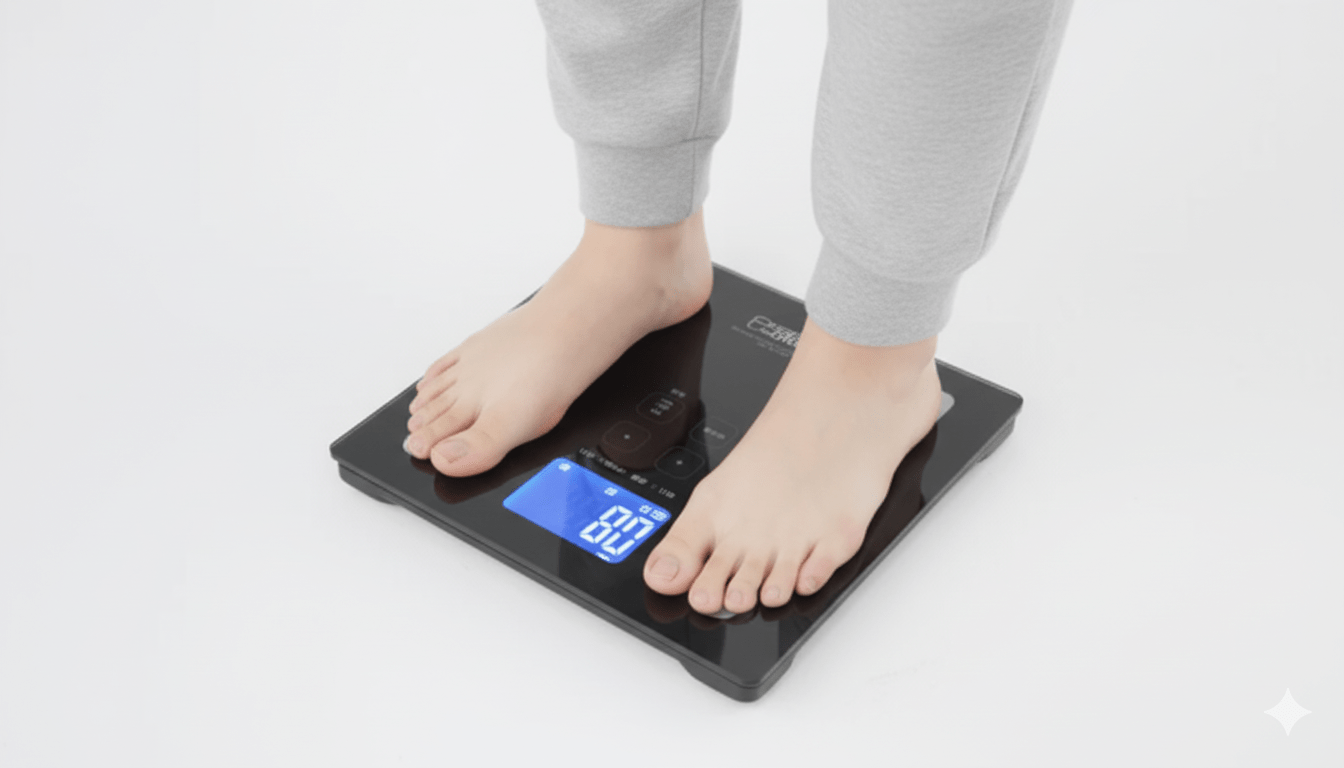Xanax can change your appetite and eating patterns, which means weight can go up or down depending on the person and context.
Most signals point to a tilt toward increased cravings and lower activity for some people, especially with evening doses or when stress eating is a pattern.
You will also see people with anxiety related appetite loss eat more normally once symptoms ease. In other words, Xanax weight changes are possible and mixed.
Alprazolam can push appetite and intake up for a subset of users and may lead to weight gain over time, though some people see little change or even weight loss.
What Do Xanax Weight Changes Look Like?
Xanax, the brand name for alprazolam, boosts signaling at GABA A receptors. That calms anxiety and often makes people sleepy, woozy, and less active.
The official Pfizer label and the DailyMed monograph document common effects like drowsiness, dizziness, and impaired coordination. Those side effects can lower daily movement and weaken dietary restraint, which can lead to gradual weight gain.
At the same time, what and how much we eat is driven by brain reward and stress systems. A long line of controlled rodent studies shows that benzodiazepines increase palatable food intake even when animals are already full.
That pattern is strongest when drugs act on the alpha 2 and alpha 3 subtypes of GABA A receptors, and it maps to reward circuits that make tasty foods feel more appealing.
Human signals are understandably messier. In women with premenstrual mood symptoms, alprazolam reduced anxiety in some trials and sometimes tracked with changes in cravings, though appetite was not the main outcome.
In real world data, a small Twitter analysis did pick up a handful of weight gain mentions alongside frequent reports of drowsiness and fatigue.
None of this proves a specific number for how often weight changes happen, but together it builds a plausible picture: for some people, alprazolam increases hedonic eating and cuts activity, nudging weight up over time.
How Xanax May Affect Appetite and Weight?
While often prescribed for anxiety, Xanax can have unintended effects on metabolism and eating habits. Understanding these pathways is crucial for patients and healthcare providers.
Pathways that can increase appetite and weight
- Hedonic amplification: By enhancing GABA A signaling in key circuits, benzodiazepines can increase the “liking” and “wanting” of palatable foods. Work in animals situates this in the parabrachial nucleus, hypothalamus, and dopamine pathways from the ventral tegmental area to the nucleus accumbens.
- Lower activity and weaker top down control: In a crossover experiment, alprazolam caused pronounced fatigue, sleepiness, and concentration problems and shifted brain network efficiency in ways consistent with sedation and stronger sensory cue pull. These changes can make it harder to resist food cues while moving less across the day.
- Relief of stress related anorexia: Acute stress increases corticotropin releasing hormone which suppresses appetite. By reducing anxiety and stress drive, alprazolam can normalize intake for people who were barely eating during flare ups.
Put simply, alprazolam can raise the appeal of comfort foods, lower your daily movement, and change how strongly food cues grab your attention, especially when you feel less anxious and more open to eating.

Why do some people eat less on Xanax?
Not everyone eats more. If your baseline pattern is emotional overeating under stress, a calmer state may ease compulsive intake. Some users also feel too sleepy or queasy to snack.
The net effect depends on your baseline appetite, the time you take doses, and how sedation and anxiety relief play out day to day.
What We Know From Studies?
Research on Xanax and its effects on appetite has provided useful insights, though much of it is still developing. Both human and animal studies highlight patterns worth noting.
Animal research is consistent
Across many experiments, benzodiazepines increased intake of sweet or high reward foods in animals that were already sated.
Selective activation of alpha 2 and alpha 3 GABA A subtypes increased sucrose intake and motivation, while drugs that target alpha 1 did not reliably do so.
This pattern points to a hedonic, not hunger driven, mechanism. Cross talk between opioids and dopamine in the VTA to accumbens pathway further supports why reward tuned drugs can change eating.
There is also evidence that exposure during sensitive windows can alter reward sensitivity later. Preclinical work found that adolescent alprazolam exposure produced lasting changes in signaling in the VTA to accumbens pathway, which is relevant to hedonic eating risk.
Human signals are suggestive, not definitive
- PMDD and appetite: Alprazolam reduced some premenstrual symptoms in older controlled trials, but sedation and dependence risks limited its role. Appetite was not the main outcome, yet cravings and intake often fluctuate in the luteal phase. These trials offer context that anxiolysis can shift eating in a hormonally sensitive window.
- Brain and behavior: In a modern crossover study, alprazolam produced stronger fatigue, sleepiness, and concentration impairment than placebo and showed widespread changes in brain networks that fit a sedation pattern. That pattern can make cue driven eating more likely while cutting activity.
- Real world murmurs: Social data adds small hints rather than clear numbers. A comparative Twitter analysis found few alprazolam posts overall but did note weight gain mentions among more common side effect tweets about drowsiness and fatigue.
- Product label lens: The alprazolam label centers on anxiety relief and sedation, not appetite per se. Drowsiness, dizziness, and impaired coordination are frequent in trials, and dry mouth is common. Such effects point to indirect pathways for weight change more than a direct metabolic effect.
Taken together, animal studies are clear about hedonic eating increases with benzodiazepines. Human data show anxiety relief, sedation, and network shifts that make increased cravings and lower activity plausible, with some small real world signals. Exact rates of gain or loss remain uncertain.

Who is Most Prone to Xanax Weight Changes?
Some situations raise the odds that Xanax will nudge eating upward.
- Luteal phase or PMDD: Hormonal shifts change GABA related sensitivity and mood. Anxiolysis in this window can change cravings, and hedonic eating may be more likely.
- Emotional eating patterns: If you reach for comfort foods when anxious, relief plus heightened palatability can increase intake.
- Sedation sensitive users: Older adults or people with liver issues may feel more sleepy, move less, and snack more for convenience. Dose adjustments are standard in these groups per the Pfizer label.
- Adolescents and young adults: Although most appetite data are from adults, reward circuits continue to mature in youth. Preclinical findings of lasting reward changes after adolescent exposure suggest extra caution.
- Evening dosing: Sedation that peaks when you are home near the kitchen can line up with more snacking opportunities.
On the flip side, people with stress related appetite loss may simply return to baseline intake once panic and tension ease.
What You Can Do About Xanax Appetite Effects?
Here are practical steps to keep eating steady if you notice Xanax appetite effects or early weight shifts:
- Track your baseline for two weeks before and after starting or changing dose. Note weight, meal times, and evening snacks.
- Discuss dose timing with your prescriber. Earlier dosing can reduce late night cravings for some people.
- Front load nourishment. Eat a protein rich breakfast and a balanced lunch to blunt evening hunger and cue driven snacking.
- Make movement easy. Short walks or light chores during your least sleepy hours help offset lower activity.
- Revisit your plan if weight keeps rising. You might lower the dose, switch to non benzodiazepine options for chronic anxiety, or add brief behavioral support.
Why Does it Matter?
Weight is not just a number. If Xanax nudges you toward more cravings and less movement, a few months can add up.
Animal studies show benzodiazepines enhance palatable eating, and human research links alprazolam to sedation and brain network changes that can weaken self control around food.
Stress biology also means anxiety relief can change appetite in either direction. You have levers to pull though. A small plan and an open conversation with your clinician usually keeps things on track.
If you are noticing unwanted weight change or persistent cravings, ask your clinician about timing, dosing, and alternatives, and start a simple plan today. Don’t let addiction control your life, reach out to Hand in Hand Recovery today and take the first step toward lasting freedom.

 info@handinhandrecovery.com
info@handinhandrecovery.com 3411 Austell Road Suite 200, Marietta, Georgia, United States
3411 Austell Road Suite 200, Marietta, Georgia, United States

